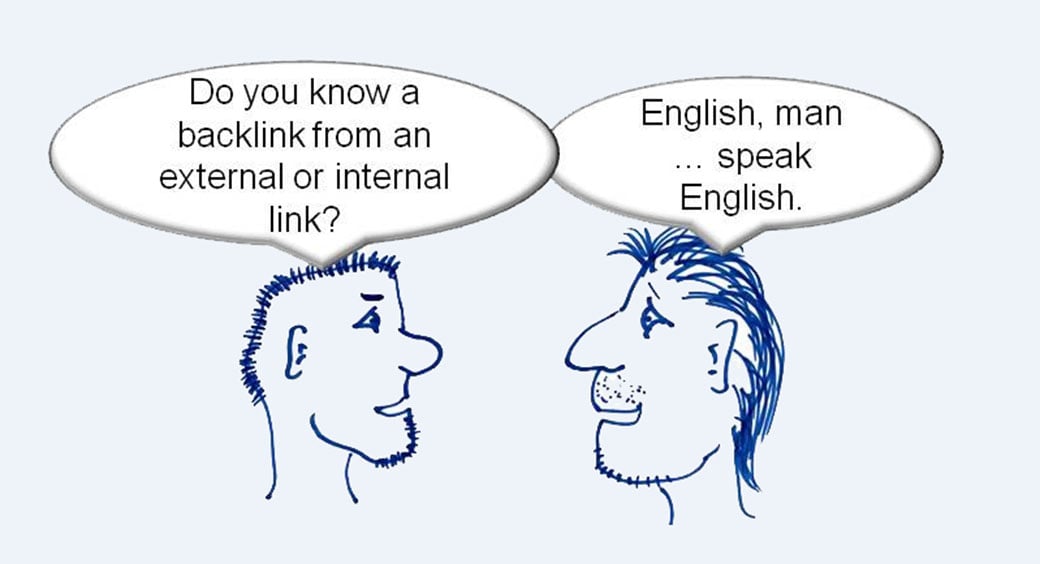Even a complete internet newbie knows that internal linking SEO is really important for a successful content managing these days. Still, the further theory may look quite threatening and overwhelming, though, in fact, there is nothing to be afraid of. So, let’s us try to come to terms with internal link building and learn how to make loyal friends out of SEO links.

What are SEO links?
Search engines use SEO links to find out what content on your website is related and what the value of that content is. There are three main types of SEO links: external, internal, and inbound. To use them successfully you should know the difference between these three varieties.
- External links point from one domain to a completely different domain (another website or an affiliate program). As a rule, they are used to provide your visitors with some additional information on a subject.
- Inbound links (backlinks) are SEO links from other sites into your own one. They are one of the sources of information for measuring the quality of a website because such a hyperlink is theoretically a direct recommendation from one website to visit another in order to obtain even more information.
- Internal SEO links point only to your own specific website or domain.

In general, internal links include:
- common page elements;
- a concise menu bar;
- natural page links sprinkled throughout your site.
Why is Internal linking SEO important?
Helps to build your SEO
It happens in the following way: search engines find your site and then follow the links to discover additional pages on your site. If you leave the pages unlinked, the search engines will have to find each page separately, and, as a result, they will be considerably less productive in finding your online content. Search engines are using certain algorithms for website ranking. If you know what they are looking for, it is easier to make the ranking higher. You can also apply special SEO tools to make search engine marketing more effective.
Forms the structure of your website
Internal linking SEO structures your website making it both visually appealing and effective. This way you can organize the content more logically because internal linking SEO establishes the information hierarchy for the given website. So, by adjusting your internal linking SEO you will help your visitors find the necessary information more quickly.
How to make internal linking SEO more effective?
Here are some search engine optimization tips which will help you make the work of your website more effective.
Apply a user-focused approach
An efficient internal link building requires a lot of planning and should be well-balanced. It means that while planning your internal linking SEO strategy you should take into consideration the target audience of your website in general and of this or that piece of content in particular.
Try to put yourself in the shoes of these people and predict what content and, as a result, what internal SEO links may be interesting for them. It is also wise to be personal and to use your knowledge of psychology as well. Do not forget that the culture surrounding, gender, race, and age to make the difference for the perception of the information. The outcome of this simple user-focused approach will surprise you for sure.
Use only valuable links
Respect your readers and do not waste their time. Do not add internal SEO links only for the sake of the internal linking SEO. If you don’t follow this simple rule, your visitors will get used to the situation when links aren’t worth following and will ignore them completely. Neither you nor your internet ranking will like this situation. The best way to avoid it is to offer really useful internal SEO links.
Go for the content matching links
Natural links – best links. So, it is crucial to the success of your internal linking SEO plan to keep anchor texts closely connected with the content you’ve placed them in. Besides that, they should answer the general logic of the website structure. No overthinking is welcome in this case – the internal link building needs to be clear and reasonable. You should understand that the more relevant your target keywords are, the better your rank will be. By providing the internal SEO links which are not rooted in the context of the article you destroy your readers’ trust and thus spoil your ranking perspectives.
Put internal links within the text
To write at the end of your new article something like ‘See other related posts’ or ‘You also may like’ and add several internal SEO links there is an easy and normal practice. Nevertheless, do not yield the temptation to use only this well-trodden way. It is much better for internal linking SEO to sprinkle the internal SEO links throughout the whole text of your article. By doing it you will give the reader the context and encourage to learn more about the subject in a different place in a natural way.
Link from the header
Think about adding internal SEO links to your freshest articles from the homepage or the header. This is excellent for the internal linking SEO because it will give the most important posts or pages a lot of link value. You should understand that the homepage of a website has the greatest link value due to the most backlinks. So, use this value for the sake of your newest posts and help search engines find these posts much quicker. Linking only to the category page will never give the same results. Try to add links to most important pages on the homepage. The choice of the pages depends on the SEO strategy of a particulate website.
Pick the right anchor text
The term ‘anchor text’ is usually applied to the highlighted clickable text in hyperlinks. The anchor text is also known as the link label or link title. To be able to choose the best anchor text for your needs you have to know some general information about anchor texts. For internal linking SEO optimization the next anchor text types can be used:
- generic anchors (normal anchor texts like “click here” or “go here”);
- branded anchors (any anchor that uses the brand name as text);
- brand + keyword anchor (a combination of your brand name and your choice of the keyword);
- LSI (Latent Semantic Indexing) anchors (refer to the variations of your main keyword, or so-called synonyms);
- partial match anchor text (the partial presence of keywords in the anchor text like: “useful internal linking SEO tips,” “learn more about internal linking SEO” etc.);
- long tail anchors (similar to partial match anchors, except for the fact that they’re longer);
- exact match anchors (the exact match of your target keyword: if your target keyword is “internal link building,” so your anchor is also “internal link building”).
Branded anchors are the safest to use unless your website is an exact match domain. Using brand and keyword anchors is another safe and effective method for building a strong anchor profile. But the most important type of anchor text for internal linking SEO which plays a crucial role in improving your ranking is exact match anchors. For better results, try to distribute different types of anchors wisely because it may seriously influence your search engine ranking.
Too many links are no links
It is quite obvious that the internal linking SEO is a very powerful means of making your internet ranking high. Still, the efficiency of internal SEO links is a question of striking the right balance. You may choose the right text anchors, but if you link every other line, the result will be opposite. The ideal number of internal SEO links to your old articles included in a new piece of your content is from three to five. The total number of links on any page, including the navigation, should never be more than 75-100. Anything beyond that is too much. If you keep such an internal link building strategy, the search engines will be able to review and rank your content in the best way.
Add new content regularly
There is no secret that search engines continuously scan the Internet looking for new content. This so-called “freshness value” is an important part of the ranking algorithm. If you want your website to have high ranking results, generate new content as often as possible. By using internal linking SEO in new articles and thus connecting them to the older ones you will improve both the strength of your website structure and the ranking position.
Refresh your old articles
Do not feel ashamed to renew your old content if it is still relevant and useful. You can do it by rewriting the article a bit by adding new paragraphs, updating the information in the article, and including fresh internal SEO links. These simple methods will revive old articles and make them completely new from the point of view of search engines.
Additional search engine optimization tips: ‘Do Not Do’ checklist for internal linking SEO
Do not prefer image links to text links
There is nothing wrong with using image links for internal linking SEO. This approach may bring some really great results. For example, if you need to diversify your anchor profile, consider using image anchors. Still, for better search engine rating, the use of link texts (reference texts) should stay the chief way of internal link building
Do not link to the homepage
The home page has a great linking potential. It is not useful to waste it in such a way.
Do not use broken SEO links
One thing that harms considerably the efficiency of internal linking SEO is the links that no longer work. Examples of broken links are a page that has been moved or a deleted piece of information. One or two broken links probably may not impact your rankings, but multiple broken links will harm them for sure. Use special programs which will help you avoid broken SEO links.
Do not link ‘Contact us’ page
‘Contact us’ page is not a good link for the majority of situations. The only thing such a link is likely to bring is your readers’ irritation. You don’t need it for sure.
Do not use the same links
Try to avoid adding several identical SEO links to the same page. Sometimes it is really difficult to do it, but nevertheless, you’d a better attempt.
Do not put important links in the end
You can add links to any part of the article or post. But you’d better put the most valuable links at the very beginning (the first paragraph is the best choice). Your content may be of the best quality, but the reader for some reason may not reach the end of it. So, do not take unnecessary risks.
Conclusion
As you see, the internal linking SEO is not as frightening as it seems at the first sight. Even if you are far from being an expert in this field, you are able to cope with improving the search engine rating of your website without too many extra efforts. You can also refer to special SEO guides for further information. Still, you need to be rather hardworking, diligent and a bit creative. I hope that these search engine optimization tips will help you in achieving your goals.
